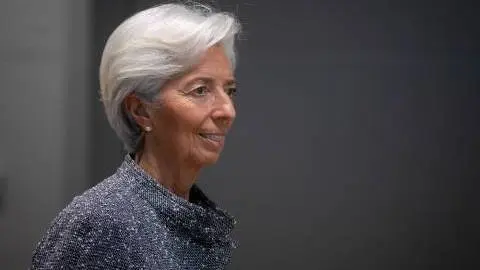Federal Reserve: Delivering home truths
While equity markets are looking positively to the future, the Fed's downbeat tone offers a sobering assessment on economic prospects. Nonetheless, there is a promise that it is prepared to expand its toolkit to safeguard the flow of credit. Given this backdrop, a move from the emergency zero percent level looks set to be many quarters maybe even years away
No change as the Fed warns of "considerable risks" over the medium term
The Federal Reserve voted unanimously to leave policy unchanged with the target range for the federal funds rate maintained at 0-0.25% and the interest rate on excess reserves left at 0.1%. This will remain the case until the Fed is "confident that the economy has weathered recent events and is on track to achieve its maximum employment and price stability goals".
Officials have also promised to continue to "purchase Treasury securities and agency residential and commercial mortgage-backed securities in the amounts needed to support smooth market functioning".
The statement itself is downbeat, highlighting the "tremendous human and economic hardship" that the coronavirus outbreak has caused around the world. It also notes the significantly impaired financial conditions that have hurt the flow of credit in economies. This will "weigh heavily on economic activity, employment and inflation in the near-term and poses considerable risks to the economic outlook over the medium term".
Federal Reserve balance sheet & policy interest rate

The Fed still has more options… if needed
Improved financial market conditions have meant the Fed has started to slow the rate of QE purchases of Treasuries from an initial $75bn per day to $10bn per day.
The Fed can also conceivably cut interest rates into negative territory, but we sense this would be very much a last resort option. The fact that Sweden didn't return to negative rates yesterday underlines this point
Nonetheless, the press release emphasises they could be ramped up once again and that it has more in its toolkit should that be necessary. If the Fed felt more action was warranted to ensure recovery it would likely involve expanding current asset-buying programme volumes and broadening the range of assets included in its QE initiative.
It could also conceivably include cutting interest rates into negative territory, but given the limited success of these measures overseas, we sense this would be very much a last resort option. Sweden’s decision not to return to negative rates yesterday underlines this point.
Moreover, the implications for money market funds and “breaking the buck” offers a strong disincentive to go down this route.
A long unwind
The prospect of ongoing social distancing and travel restrictions over coming months in combination with numerous likely business failures means the recovery has little chance of being V-shaped (see our earlier GDP note). At the same time the risk of a second wave of Covid-19 once lockdown restrictions are eased, prompting a renewed economic downturn, cannot be ignored.
The Fed will, therefore, retain a desire to keep policy stimulative until there is the confidence that Covid-19 is beaten and the US economy is on a reliable and sustainable growth path.
A move from the emergency zero percent level looks set to be many quarters and possibly even years away
Given the scale of the economic downturn, which we think will be around 14% peak to the trough (between end 4Q19 and end 2Q20), we see very little near-term price pressure outside of areas such as food. A huge output gap with more than 30 million people out of work is not a recipe for higher wages and higher inflation in general.
Given this backdrop, a move from the emergency zero percent level looks set to be many quarters and possibly even years away. We suspect that the Fed will first bring about an end of their asset purchases, potentially in late 2020/early 2021. They will then maintain the size of the balance sheet for a period (depending on the pace of the recovery) and then our best guess at present is that they will start to contemplate rate hikes in late 2021/early 2022 with the balance sheet then allowed to start running down as assets mature.
Nonetheless, the risks remain skewed to a longer time frame for action.
Read
This publication has been prepared by ING solely for information purposes irrespective of a particular user's means, financial situation or investment objectives. The information does not constitute investment recommendation, and nor is it investment, legal or tax advice or an offer or solicitation to purchase or sell any financial instrument. Read more
Download
Download snap
29 April 2020
ING’s Covid-19 roundup: Lagarde and Powell’s whatever-it-takes moment This bundle contains 11 Articles